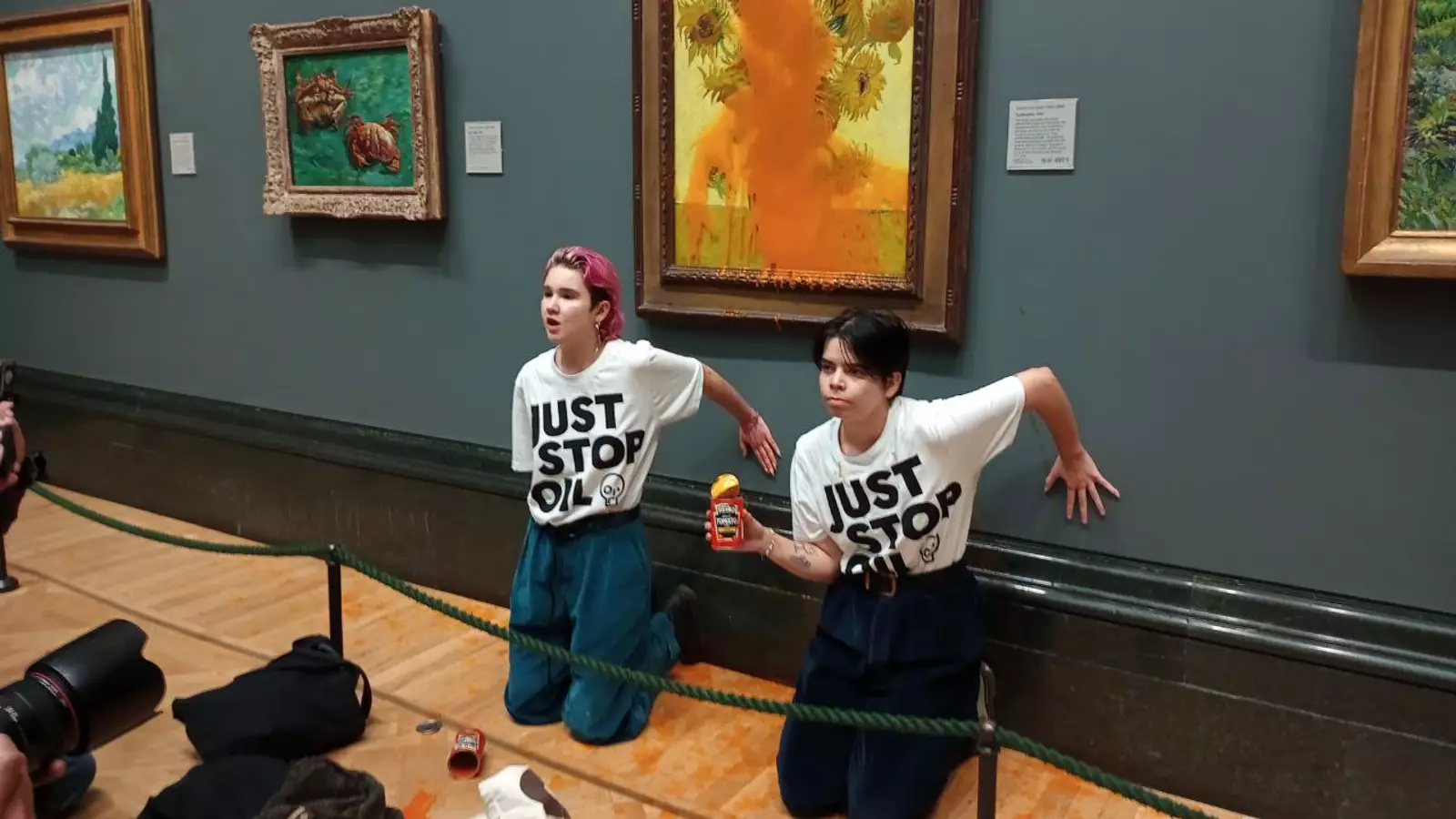The National Gallery in London has introduced a stringent ban on liquids in an effort to protect its renowned collection from a wave of vandalism incidents linked to activist protests. Effective immediately, this policy permits only essential items such as baby formula, expressed milk, and prescribed medications. The museum’s decision comes as a direct response to ongoing confrontations between climate activists and artworks, which have seen cases of direct attacks on famous pieces, including Vincent van Gogh’s iconic “Sunflowers.”
The museum’s administration has emphasized the need for enhanced security measures by urging visitors to carry minimal items and refrain from bringing large bags. This reflects a growing concern for the safety of both visitors and the artworks housed within its walls. “We have now reached a point where we have been forced to act to protect our visitors, staff, and collection,” the institution declared, highlighting the urgency of their measures.
The Impact of Recent Incidents
Several high-profile attacks on artwork since July 2022 have catalyzed this decision. Notable incidents include the targeted assaults on John Constable’s “The Hay Wain” and Velázquez’s “Rokeby Venus.” These confrontations with art not only caused physical damage to the works but also inflicted psychological distress on onlookers and staff, interfering with the museum’s mission to provide access to art for all.
In just the last two weeks, two attacks have been reported, intensifying the museum’s sense of urgency to revise its operational protocols. In a statement, the gallery acknowledged that “such attacks have caused physical damage to the artworks, distress to visitors and staff alike,” underscoring the ramifications of these troubling actions.
Security Procedures and Visitor Experience
As part of these new protocols, the National Gallery will implement walk-through metal detectors at its entrances, subjecting all bags and rucksacks to thorough inspection. This heightened vigilance may result in longer entry times as visitors adapt to the changes aimed at safeguarding the collection. The gallery’s priorities reflect a balance of preserving art and ensuring a safe environment for everyone visiting the gallery.
In a prominent incident last month, activists hurled soup at two versions of “Sunflowers,” though luckily the paintings remained intact. However, damages were reported to the frames, with estimates ranging from £10,000 to £20,000. In another troubling case from October 2022, two Just Stop Oil activists were sentenced to jail for earlier damaging one of the frames.
The National Gallery’s proactive measures signal the tension between artistic appreciation and activism, highlighting the delicate balance institutions must maintain. As protests continue and the climate crisis remains in the spotlight, the challenge of ensuring the integrity of cultural treasures becomes even more significant. It remains to be seen how these new measures will affect visitor engagement and the museum’s reputation as a safe haven for both art and its admirers, reminding us that actions taken under the banner of social justice can have unintended consequences for art and culture itself. In an era where art has become a battleground for activism, the stakes have never been higher, necessitating a thoughtful dialogue about the right to protest and the protection of cultural heritage.

